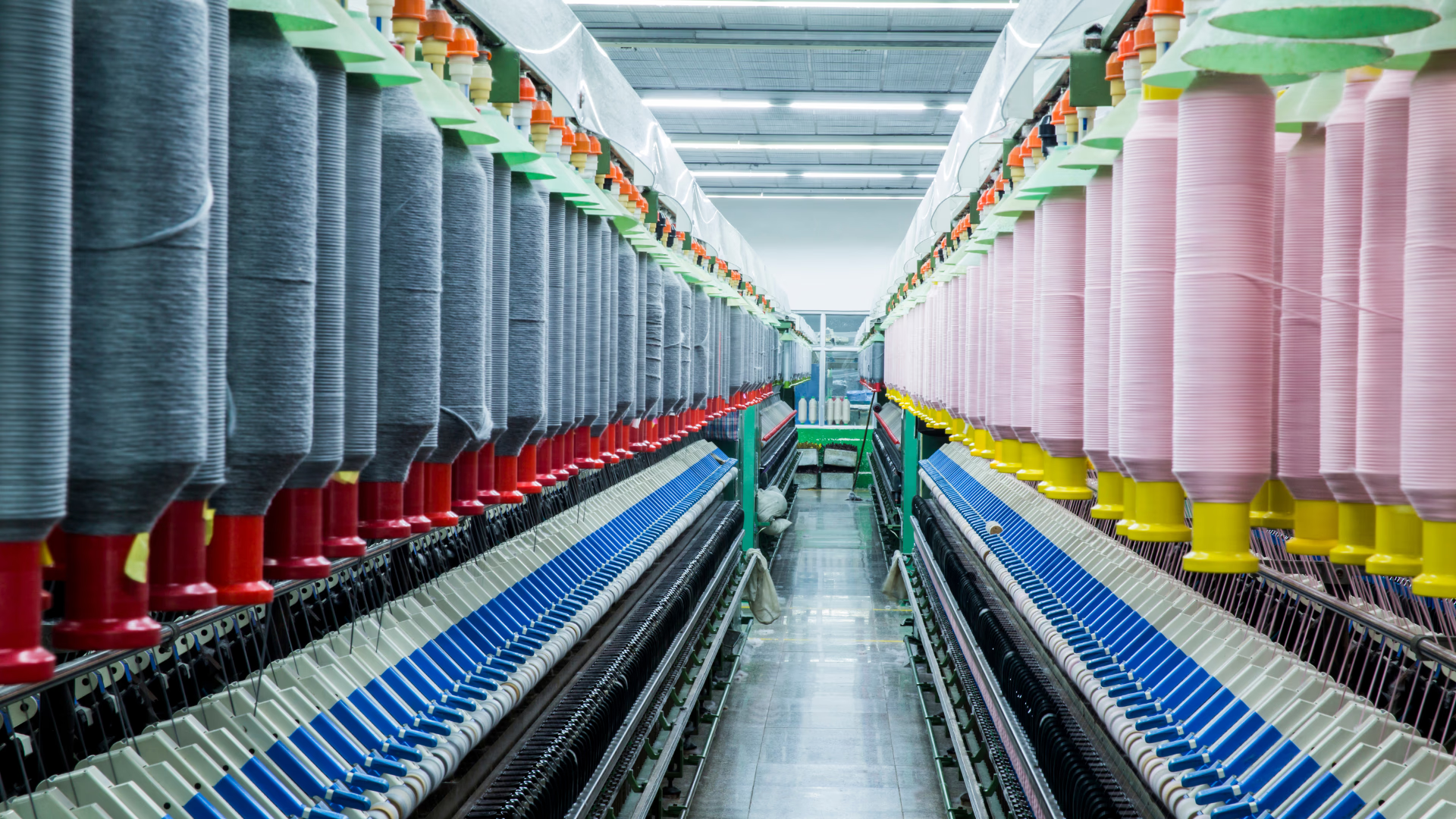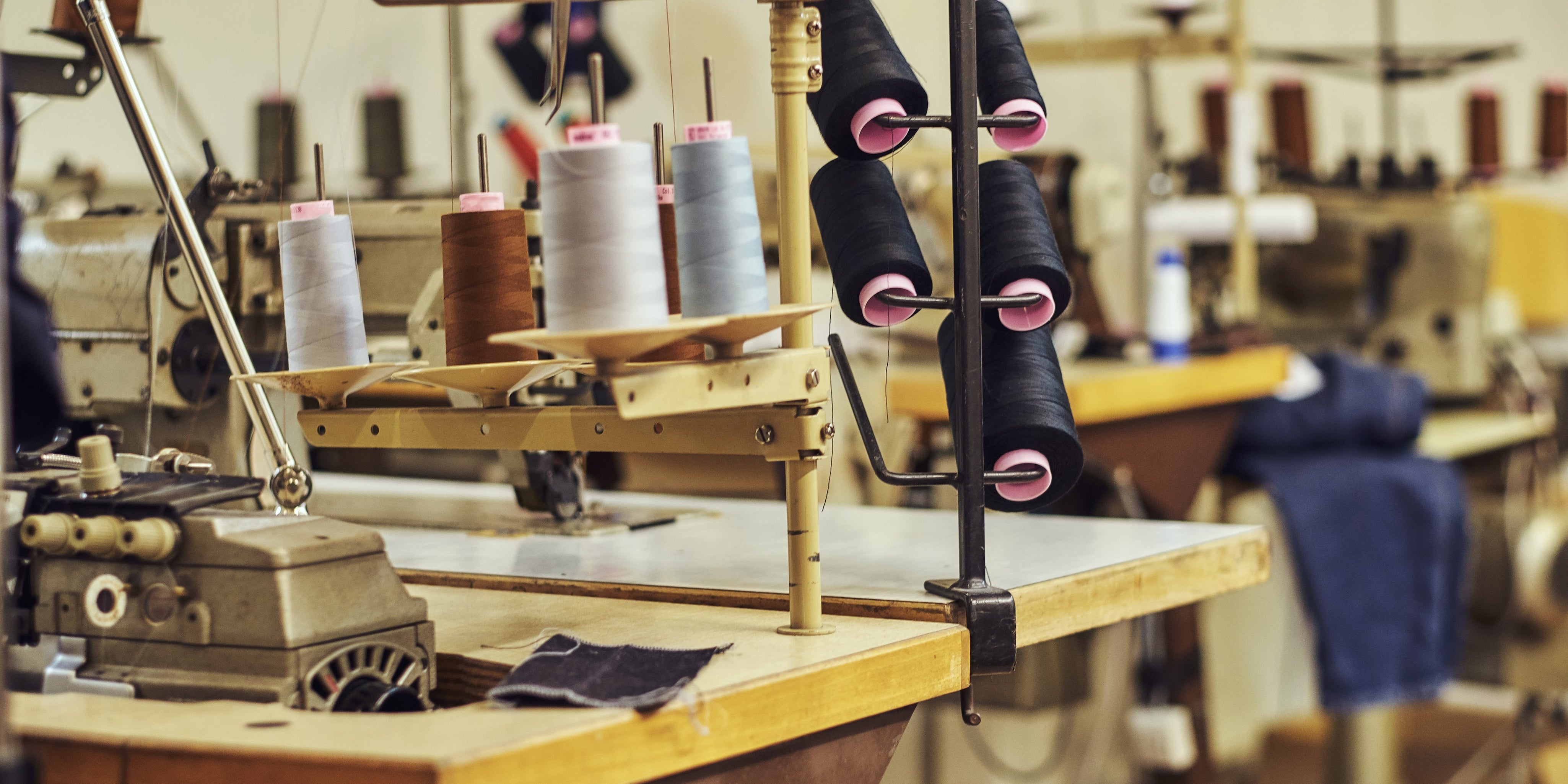Imagine your brand is suddenly unable to deliver its latest collection.
Shelves are empty, online orders are delayed, and frustration grows. You may think the issue lies on the surface and start focusing on retail operations or marketing strategies, but in reality, it could be the domino effect of neglecting your supply chain.
Looking back at the pandemic can help further illustrate this point. Brands likely recall the supply chain disruptions: chaotic conditions, delayed deliveries, product shortages and more.
It was a pivotal scenario when brands had to confront the reality of their supply chains and recognize the need for a more comprehensive approach—a moment when suppliers were finally brought into the conversation.
In fact, according to the 2021 Fashion Industry Benchmarking Study, even a year after the onset of the pandemic, U.S. fashion companies' COVID-19 response strategies included strengthening relationships with key suppliers, emphasizing sourcing agility and flexibility, and leveraging digital technologies.
This was one of the times when the need for effective supply chain management was finally given the importance it deserved. Yet, in retrospect, it’s important to question: should it take a crisis for brands to recognize the importance of understanding their supply networks and cultivating strong supplier relationships?
It's important to discuss this, but first, we need to acknowledge the obstacles within it. So, keep reading!
The Persisting Challenges of Supply Chain Transparency
Fast forward to last year, when the Transformers Foundation released a report revealing that this critical disconnect persists in the fashion industry with brands continuing to prioritize retail operations while neglecting the supply side of their value chain.
The issue? It fosters disconnection between brand and supplier, ultimately restricting growth potential, slowing down innovation, and generating missed opportunities for both parties in the value chain.
Tackling supply chain issues definitely isn’t easy, and fashion’s supply chains can be specially complex, which can make mapping and tracking them seem daunting.
Mapping the entire value chain of a garment, and ensuring traceability of its origin is extremely complex. For a product as simple as a cotton tee-shirt, there can be as many as 10 organizations involved, from cotton cultivation to retail, including traders.
-Amit Gautam, CEO of TextileGenesis, a Lectra company.
That can look particularly scary in growth scenarios: as fashion brands expand, their supply networks naturally grow more intricate in pursuit of efficiency, creating a paradoxical effect—the larger the brand becomes, the hazier its understanding of its own supply chain becomes.
This diminishing visibility frequently leads businesses to deprioritize traceability efforts altogether. And naturally, for small and medium enterprises, these challenges take on a different (and often harder) dimension.
Therefore, with limited resources and tighter operational margins, SMEs face these supply chain complexities in ways that can directly impact their daily survival and growth potential.
Many SMEs lack access to technology and marketing capabilities, which is especially challenging in a landscape where global supply chains remain fragmented and power imbalances favor large brands.
This leads to less attention being paid to the inner workings of the supply chain, which, over time, can cause brands to lose sight of the importance of these foundational relationships.
How Overlooking Your Supply Chain Is Blocking Your Brand’s Growth
For many fashion brands, growth strategies are focused on retail expansion, marketing, and trend-driven collections. But what if the true obstacle isn’t consumer demand, but the gaps in your supply chain?

Brands miss out on critical advantages that directly impact scalability, efficiency, and long-term resilience when their supply base is left out of strategic decision-making.
What Does “Overlooking the Supply Chain” Really Mean?
Overlooking the supply chain means missing critical aspects that directly impact brand credibility, compliance, and long-term success. This includes:
-
Inability to prove sustainability – Without full supply chain visibility, brands struggle to verify the sustainability claims of their products.
-
Gaps in material traceability – Certified materials lose their credibility if the entire value chain isn’t traced, from source to final product.
-
Quality control risks – Without proper monitoring, material quality can vary, affecting product performance and customer trust.
-
Weak supplier relationships – Lack of direct engagement with suppliers limits collaboration, innovation, and long-term reliability.
What are the consequences?
-
Regulatory roadblocks – With stricter laws on traceability and sustainability, brands that can’t verify their supply chain risk non-compliance, fines, or being locked out of key markets.
-
Missed market opportunities – Many retailers and investors now require proof of responsible sourcing. Brands that can’t provide this risk being excluded from partnerships or funding.
-
Inconsistent product quality – Without strong supplier oversight, brands face quality issues, leading to returns, bad reviews, and damage to brand reputation.
-
Higher costs and inefficiencies – Poor supplier relationships and lack of traceability mean hidden costs, supply disruptions, and difficulty scaling operations efficiently.
Basically, neglecting your supply chain can slow down growth by making it harder to prove sustainability claims, maintain quality, meet regulations, and secure reliable materials—all crucial for scaling your brand and staying competitive. These are just a few examples; the impacts can go even further.
Vertical Integration & Strong Supplier Partnerships: A Win for Fashion Brands
So, how can brands turn this around? One solution is moving toward more vertically integrated supply chains, with a key focus on strengthening supplier-brand relationships.
Even some luxury brands have been giving attention to this in recent years, recognizing its importance for long-term stability. As a 2023 Vogue article highlighted, “From Prada to LVMH, fashion brands are ramping up their investments in suppliers, bringing benefits on both sides.”
And even earlier, as expressed in this 2020 Business Of Fashion article, many companies have begun investing directly in their suppliers to build stronger, more cohesive, and mutually beneficial partnerships.
This conversation remains highly relevant because it directly impacts how brands scale and sustain growth. Bringing suppliers closer to production it's not just strategic but necessary.
Specially in times of geopolitical shifts and evolving regulations, this level of connection offers resilience, transparency, and mutual benefits for both brands and suppliers.
For SMEs, this is especially crucial. Take "Yes Friends," for example. What started as a sustainable and ethical fashion boutique in a shipping container has now reached worldwide recognition. Classified as "Great" by Good On You, the brand’s success is closely tied to its supply chain optimization. Here’s how:
-
Most of its supply chain is certified by key organizations like the Business Social Compliance Initiative (BSCI), Fair Wear Foundation, and Fairtrade International – Small Producers Organisations.
-
The brand traces most of its supply chain, ensuring full transparency.
-
They prioritize paying living wages to workers throughout their supply chain.

Image credit: Yes Friends
__
This highlights how Yes Friends doesn’t just focus on retail sales and marketing, but actively prioritizes strengthening relationships within its supply chain and ensuring ethical practices at every level.
Harnessing Technology for Effective Supply Chain Optimization
Investing in digital tools is not just about keeping up but about building a smarter, more efficient, and future-proof supply chain. The brands that embrace these innovations today will be the ones leading the industry tomorrow.
Specially when talking about textile sourcing, technology is crucial as it turns challenges into opportunities by:
-
Connecting Brands with Certified Suppliers: Technology ensures that brands can easily identify suppliers with the necessary certifications, from GOTS to OEKO-TEX.
-
Facilitating Low-Waste Processes: Digital sampling and streamlined communication reduce unnecessary waste and emissions.
-
Encouraging Circularity: Platforms promote the use of recycled and next-generation materials, helping brands close the loop in their supply chains.
Digital platforms, like World Collective Marketplace, give brands the tools to manage supply chains more effectively, track sustainability metrics, and gain real-time insights to optimize sourcing decisions. It's a solution accelerator designed to:
-
Empower brands with access to the best certified materials.
-
Support suppliers by giving them visibility and opportunities to grow.
-
Foster a global community committed to sustainable, innovative sourcing.
We believe that technology isn’t just a tool; it’s the key to building a more connected, equitable, and sustainable industry.
The future of textile sourcing is here, and it’s powered by technology. From streamlining operations to enhancing traceability and democratizing access to sustainable materials, textile sourcing technology is revolutionizing the way the industry operates.
For brands and suppliers ready to embrace this change, the possibilities are endless. Whether you’re looking to save time, reduce costs, or align with sustainability goals, the tools are now at your fingertips.


